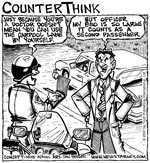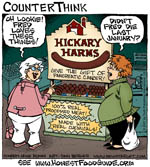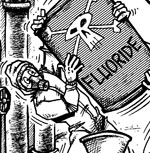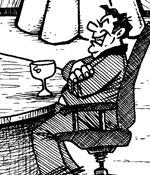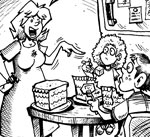What is Niacin and Other Important Information
| Share on Facebook | Share on Twitter | Share on Google+ |
What is Niacin?
It is also known by other names such as nicotinic acid, niacinamide and nicotinyl alcohol tartrate.
Important Niacin Facts: What does Niacin Do?
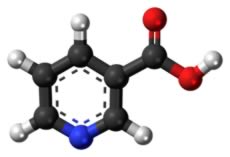 Niacin is very important for the body to function normally. It is responsible for producing energy from blood sugar and also plays an essential role in the production of fats in the body. It is also integral promoting normal nervous, digestive and reproductive systems. Studies have also revealed the effectivity of niacin in promoting relaxation and sleep, reducing harmful cholesterol levels in the blood, and in reducing depression and anxiety.
Niacin is very important for the body to function normally. It is responsible for producing energy from blood sugar and also plays an essential role in the production of fats in the body. It is also integral promoting normal nervous, digestive and reproductive systems. Studies have also revealed the effectivity of niacin in promoting relaxation and sleep, reducing harmful cholesterol levels in the blood, and in reducing depression and anxiety.More Niacin Information
What is the official niacin RDA? The official recommended daily allowance for niacin is more than the other B vitamins. Currently, it is set at 20 milligrams. However, it is continually being argued that this RDA is too low for maintaining optimum health. Different people going through different lifestyles and circumstances need varying amounts as well.
On Niacin Supplementation. Many people take niacin supplementation for one or two of the effects promised. The usual niacin dosage for supplementation ranges from 3,000 to 9,000 milligrams divided into two to three doses.
Side Effects of Niacin
With the mentioned dosage, there are not much physiological side effects caused by taking niacin supplements. However, there is one most notable side effect that niacin creates that makes it most uncomfortable. This stems from the ability of the vitamin to dilate blood vessels. This causes a warm sensation, commonly called the niacin flush.
Niacin Treatment: More about Niacin Therapy
The proven effectivity of niacin in countering various negative health concerns has led to the popularity of niacin treatment. There are a wide variety of options now available for those undergoing niacin therapy. They are typically available in health stores as 1000 mg or niacin 500 mg tablets or capsules. Ordinary niacin supplements are very safe such that they do not require doctor's prescription.
Prescription Niacin
Time release niacin has been made available to do away with the flushing side effect. Sustained-release niacin claims to not cause flushing at all. You should be wary of these preparations as it may tend to postpone the flushing. Also, there have been reported side effects of using this form which include vomiting, nausea and abdominal pain (very rare cases of liver failure have also been reported). Taking time-release forms require guidance from a medical practitioner.
Non-Flush Niacin
There are also non flush niacin supplements in the form of niacinamide, which do not produce any flushing at all. However, these supplements are not as effective in some ways, such as in inducing relaxation or in lowering serum cholesterol.
Niacin Inositol
Sufficient evidence has revealed that inositol hexaniacinate, an ester of inositol and niacin is equally effective in many ways. This ester form has been seen to produce very little flushing, without the side effects. Inositol, one of the other B vitamins, is theorized to enhance the therapeutic effect of niacin in the body.
More Niacin Related Articles
Niacin and Drug Tests - Is it true that niacin can help cheat away your drug test? This idea is all over the Internet, but here is something you need to know about niacin and drug tests.
Niacin for Lowering Cholesterol - Many people are now using niacin for lowering cholesterol, most of them taking the supplement in combination with cholesterol lowering statin drugs. What is the reason behind this popularity of niacin for cholesterol treatment? Read further and find out.
Zocor and Niacin - Many people who have cholesterol problems are now taking advantage of the combined effect of Zocor and niacin. What advantages does this combination bring? Read more and find out.
Foods Containing Niacin - Vitamin B3 or niacin is one of the important B vitamins. What are some food sources containing niacin that should never be missing in our diets? Read on and find out.
Niacin Side Effects - Though generally safe to take, there are several niacin side effects to watch out for. Read this article to find out more information and niacin supplements and possible side effects of taking them.
Niacin Effects - You may not be aware that there are various benefits that niacin can do to the body. Find out more about the many niacin effects through this article, and be amazed at what this little B vitamin can do.
-
Skin CareMen Skin Care
-
Free ResourcesFree eBooks
-
Health is not simply the absence of sickness.Hannah Green
-
Featured Health SupplementAll ingredients are assessed at molecular level to ensure synergy, safety and effectiveness.
 This is crucial because when some ingredients are combined they will help create other substances in the body.
This is crucial because when some ingredients are combined they will help create other substances in the body.
-




